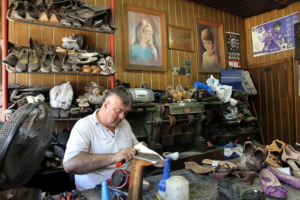Impact of COVID-19 on Poverty in Serbia

The COVID-19 pandemic created a sense of instability across the globe, not least among those living on the edge of poverty. The immediate impact of COVID-19 on poverty in Serbia was predominantly apparent among particularly vulnerable groups, such as people working in the informal sector. For workers, COVID-19 heightened job insecurity despite the government’s efforts to constrain the rate of poverty in Serbia with generous financial packages.
The Informal Sector
On March 15, 2020, Serbia declared a national emergency due to COVID-19. To mitigate the negative impacts, the Serbian government focused efforts on financial aid packages for the public. However, this financial assistance failed to reach some of Serbia’s most vulnerable groups. This includes those employed in the informal sector.
The informal sector in Serbia includes jobs in agriculture, construction, admin support, retail trade and manufacturing. A survey from 2019 discovered that 18.7% of households had employment in the informal sector. Another research study indicated that one in five people in Serbia work informally. The informal sector is an unstable sector of the labor market due to poor worker regulations and job insecurity.
Even prior to the pandemic, those employed informally faced a higher risk of falling into poverty due to the instability of the sector. As COVID-19 arrived in Europe, many industries in Serbia saw thousands of job losses. Many people reported a significant reduction in household income and increasing financial pressure but lacked access to the government’s financial aid packages.
Since the pandemic, informal employment has increased by more than 30%. This could be connected to the staggering loss of jobs among people previously employed in small and medium enterprises (SMEs) and companies having to cut down employment hours.
These factors forced people to take up informal employment to maintain an income flow. Estimates indicated that more than 700,000 people who worked for SMEs found themselves unemployed due to the pandemic. The growth of these informal industries suggests that a greater proportion of the Serbian population now faces job insecurity and the risk of falling into poverty.
Small Successes
However, the impact of COVID-19 on poverty in Serbia is not as intense as that of neighboring countries. Serbia had one of the lowest increases in poverty over the course of the pandemic. This is no small feat for a developing country with a significant proportion of people living close to the poverty line. Despite facing the most significant global crisis of the 21st century, Serbia’s poverty level post-pandemic remained the same as pre-pandemic levels, at 17.9%. While this is a noteworthy achievement, one should keep in mind that Serbia remains one of the poorest countries in Europe. However, the stabilization of the poverty rate during these last few years gives hope that Serbia can continue the pattern of gradual and consistent poverty reduction.
Looking Forward
Amid these small wins, Serbia is looking forward to recovering from pandemic stressors. Ongoing efforts are necessary to rebuild industries most impacted by the pandemic. Additionally, by renewing former jobs and creating more security in the informal sector, the risk of poverty will reduce. In 2021, Serbia received a €200 million loan from the EU Investment Bank for a project to help impacted SMEs recover post-pandemic. The initiative seeks to restore 47,000 jobs and create more than 5,000 new ones.
Serbia is seeing positive recovery results so far. A 2022 report by the EU found that participation in the labor market is increasing in Serbia as the country continues to economically rebound from COVID-19 and youth employment is on the rise. However, the report recognized that to significantly support SMEs in their recovery, further efforts are necessary.
– Ariana Mortazavi
Photo: Flickr
